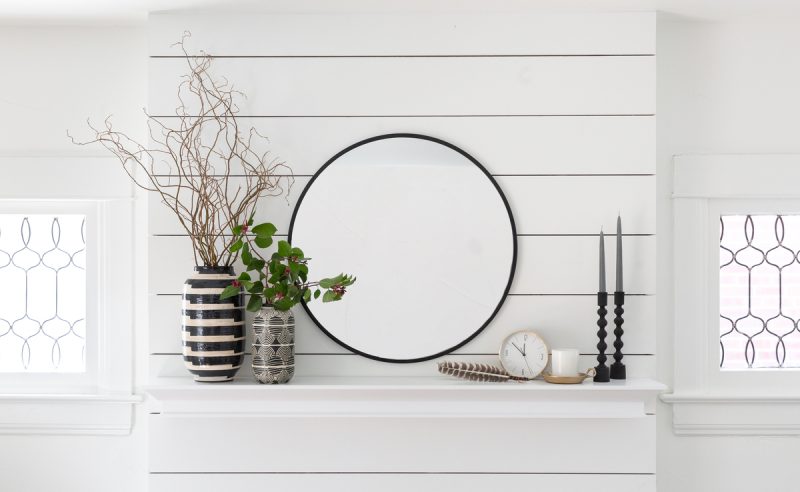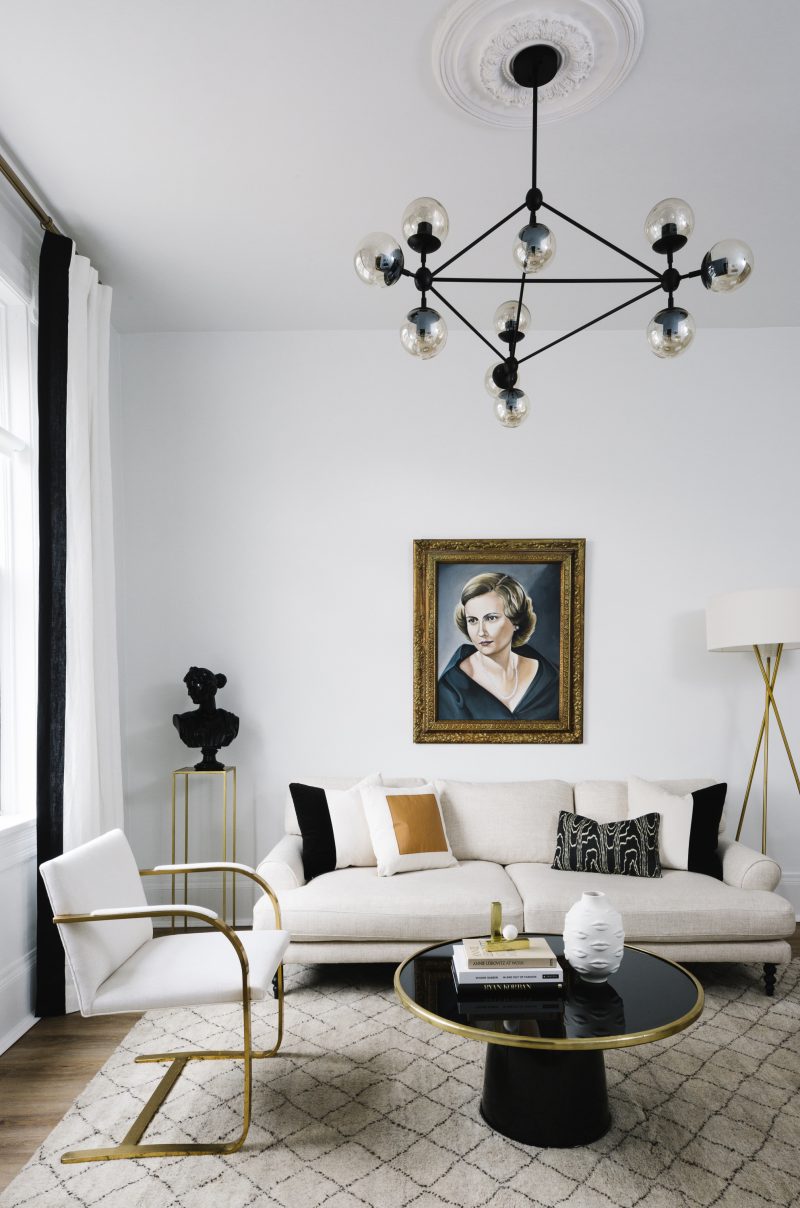A perfectly styled vignette in the entryway, a surprising yet cohesive color scheme, curtains that fall just so—you can probably tell when an interior designer worked their magic in a space. And while we offer affordable interior design services (get started with our fun style quiz), we believe home decorators of all levels and style types can learn some of our design secrets. That’s why we’re offering a ClassPass virtual class on how to style your home like an interior designer. If you don’t have ClassPass, consider this your CliffsNotes.

Interior designers will be the first to tell you: there are countless styles and sub-styles in interior design. But, in general, interior design styles are on a scale that goes from classic taste to more modern sensibilities. Think about which end of the spectrum best describes you, and identify which of the below styles speak to you:
- Classic: Timeless designs, soft lines, European elegance
- Farmhouse: Cozy spaces, jute, linen, rustic wood
- Scandinavian: Simplicity, neutral tones, beauty within imperfection
- Cali cool: Organic textures, soft palette, comfortable, touch of boho
- Eclectic: A blend of styles and eras for a home that feels filled with stories
- Luxe: Elegant and sculptural details, glam fabrics like velvet and fur, bold design
- Modern: Functional, clean lines and simple silhouettes

Perhaps your home has one clear style, be it modern, eclectic, Scandinavian or classic. We’re here to tell you, the best spaces incorporate a blend of styles. This creates a more individual look that defies cookie-cutter style. If you’re drawn to modern style, try adding a dash of Scandinavian decor—its simplicity will mesh with the modern look while adding a layered touch. All about Cali cool style? Lean on the built-in boho sensibility and bring in luxe elements like velvet to create a unique, storied approach to your space.
You can also blend from opposite ends of the spectrum. For example, a classic yet modern space would incorporate an antique painting with a clean-lined sofa, perhaps in a bold hue. And blending doesn’t just come in pairs. Take modern farmhouse Scandinavian style—a space with this particular blend would include clean-lined furniture and statement lighting, but with farmhouse elements like shiplap and wooden chairs. A simple, monochromatic palette would pull in Scandinavian sensibilities.

Think Like a Designer
To style your home like an interior designer, you need to think like one. At Havenly, our designers always think about five things: palette, contrast, scale, symmetry and layering. Let’s break it down:
Palette:
Choosing a color palette is the first step—and a crucial one—in the design process. Selecting the tones and colors in your space sets the mood: bold colors create a cheerful feel, a darker palette can create drama, and soft neutrals can create a sense of serenity. Still, remember what we said about blending? The same rule applies when thinking about palette. A mix of warm and cool tones will add instant depth and character to your space. Just be sure to start with a color you love (or can live with for many years) and build out the palette from there. Jewel tones, neutrals and pastels are all popular palettes for Havenly clients.
Contrast:
A room without contrast is boring. In order to make items stand out, you’ll need to create juxtaposition through a variety of ways. We’ve talked about the importance of contrast in palette—by mixing warm and cool tones, for example. Now, carry on that same concept as you think about patterns, textures, styles and shapes of the furniture, decor and accessories in a space. Use solids with prints. Mix round pieces with streamlined, geometric pieces. Pair high-shine metals with earthy woods. It all goes back to using various influences. The best-designed rooms are always a blend and balance of design styles, colors, shapes and textures. It really is all about contrast.
Scale:
It’s the Goldilocks method—scale means core pieces can’t be too big or too small; they’ve got to be just right. We’d argue that scale and layout are one of the main reasons to call in the professionals. Before you purchase a big-ticket item like a sofa or bed, you’ll need to know the scale is right and can fit the layout of your room.
Symmetry:
Using symmetry is important to establish visual resting spots and a sense of order. But hear us out: asymmetry is just as important as symmetry. While you would certainly want to center items like a sofa and console table, you can incorporate asymmetry into a space through art and pillows, for example. This balances the refined with the real—you want your home to look great but feel comfortable, welcoming and inviting, too.
Layering:
Layering can mean a lot of different things, but most commonly, it refers to layering textiles to create a luxurious yet cozy feel. Layered artwork is another common example: try hanging a piece of art on the wall and leaning other artwork against it on a mantle or console. Layering rugs is another easy trick that adds visual appeal and emphasizes eclectic design styles.

The concepts of symmetry, layering, scale and more can get confusing, as can identifying your preferred style and melding it with other design styles. Luckily, you can keep it simple by leaning on the three things interior designers always, always use in a space: lighting, textiles and artwork. Lighting and textiles are that perfect balance of form and function, adding style, softness and ambience to your space while also providing a practical element. Artwork is that final flourish, which can enliven a space and showcase your personal style, be it a gallery wall, a collection of family photographs, or oversized wall art.

Flex your own design muscles with our interior design style quiz, and get paired with a designer who can help hone your aesthetic.

